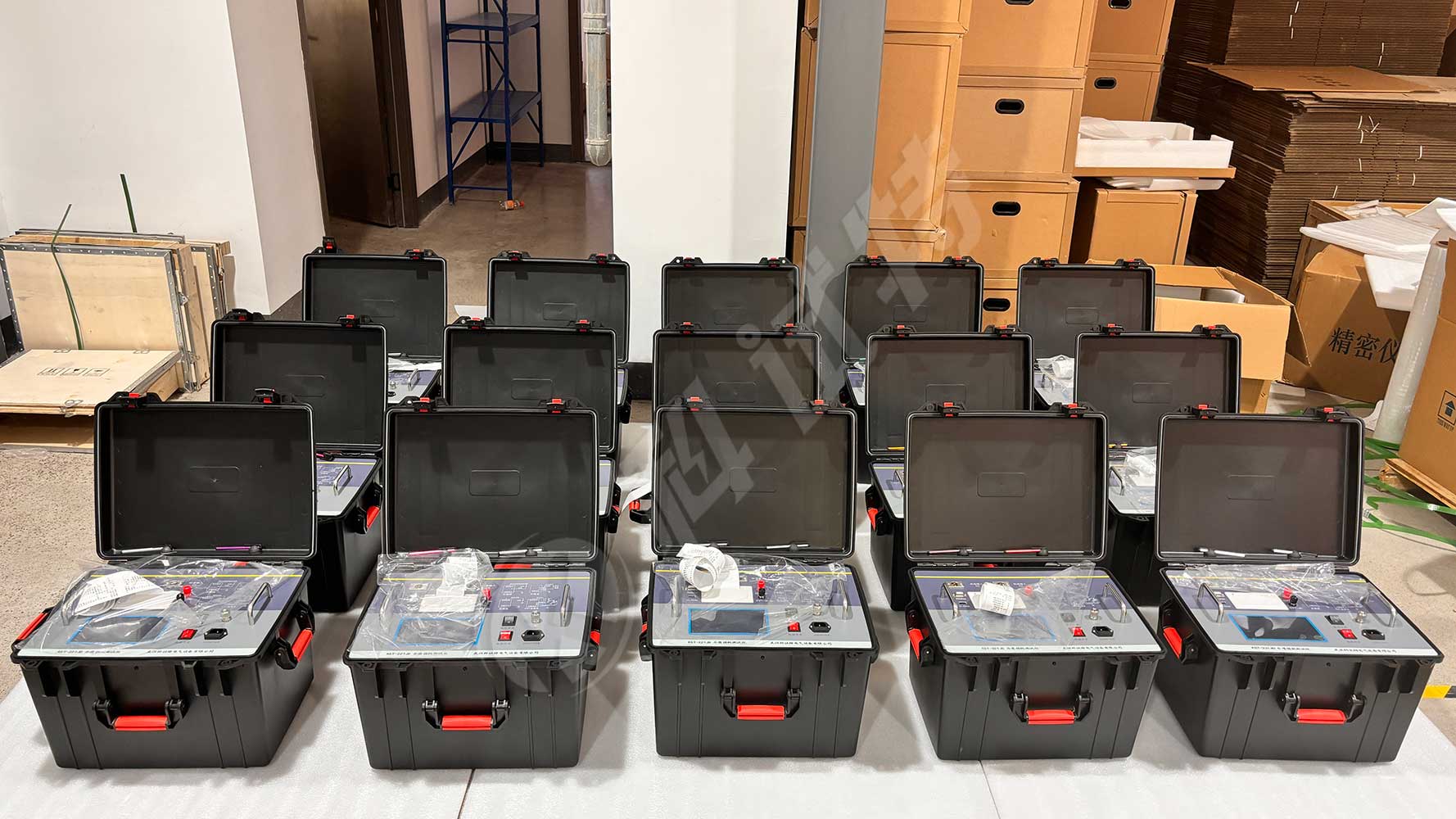To easily deal with several major faults of high-voltage dielectric loss testers, you can start from the following aspects:
1. Poor hook or ground contact
Phenomenon: The test data fluctuates significantly, and the instrument may be protected.
Reason: Poor contact between the hook and the test sample, or the presence of paint, rust, etc. at the grounding point, resulting in poor zero resistance grounding.
Solution: Ensure good contact between the hook and the test sample, scrape off the paint and rust on the grounding point, and ensure zero resistance grounding.
2. Excessive air humidity
Phenomenon: Abnormal increase (or decrease or even negative) and instability of dielectric loss measurement values.
Reason: In high humidity environments, moisture will diffuse into the interior of the material, increasing its conductivity and leading to an increase in the dielectric loss factor.
Solution: Strictly control the environmental humidity before and during measurement, and it is recommended to maintain a relative humidity between 60% and 70%. If necessary, a shielding ring can be added (but it should be noted that this method is controversial and can refer to relevant regulations).
3. Unstable power supply frequency of the generator
Phenomenon: Inaccurate test data.
Reason: The input frequency is unstable when the generator is supplying power.
Solution: Use a fixed frequency 50Hz mode to ensure stable input frequency.
4. Test line damage or poor contact
Phenomenon: Abnormal test data or instrument malfunction.
Reason: Long term use of the test line can easily cause hidden open circuits, short circuits between the core wire and shield, or poor contact of the plug.
Solution: Regularly maintain the test line and use a multimeter to check if the test line is open or short circuited. When testing standard capacitance samples, fully shielded plugs should be used to eliminate the influence of additional stray capacitance.
5. Incorrect selection of working mode
Phenomenon: Inaccurate test data or instrument malfunction.
Reason: The wrong measurement mode (forward, reverse, and CVT) was selected after wiring.
Solution: After connecting the wires, please choose the correct measurement mode, especially in interference environments, and choose the frequency conversion anti-interference mode.
6. Instrument malfunction
Phenomenon: The instrument cannot work properly or the test data is abnormal.
Reason: It may be due to damage to internal components of the instrument, power supply issues, or poor grounding.
resolvent:
Use a multimeter to measure whether the test line is open or short circuited, and whether the input power supply is normal.
Measure a standard capacitor or a capacitance test sample with known capacity and dielectric loss using positive and negative wiring. If the result is correct, it can be determined that the instrument is functioning properly.
Unplug all test wires and perform an empty test to increase the voltage. If it does not work properly, the instrument may have a malfunction.
After starting the CVT measurement, the low voltage output should show a voltage of 2~5V, otherwise the instrument is faulty.
7. Impact of experimental methods
Phenomenon: The test data is inaccurate or cannot reflect the true condition of the equipment.
Reason: Improper testing methods or failure to consider equipment characteristics.
Solution: Distinguish between experimental method errors and instrument errors, and select the appropriate experimental method based on equipment characteristics and testing requirements.

Kvtester Electronics Technology Co.,Ltd. is a high-tech enterprise specializing in power testing, testing, research and development, production, and sales of testing equipment. It has been engaged in the electrical testing industry for many years, and its products are of high quality. We welcome customers to come and purchase. Service hotline: 0086-27-81778799, to learn more, visit the official website: www.kvtester.com





